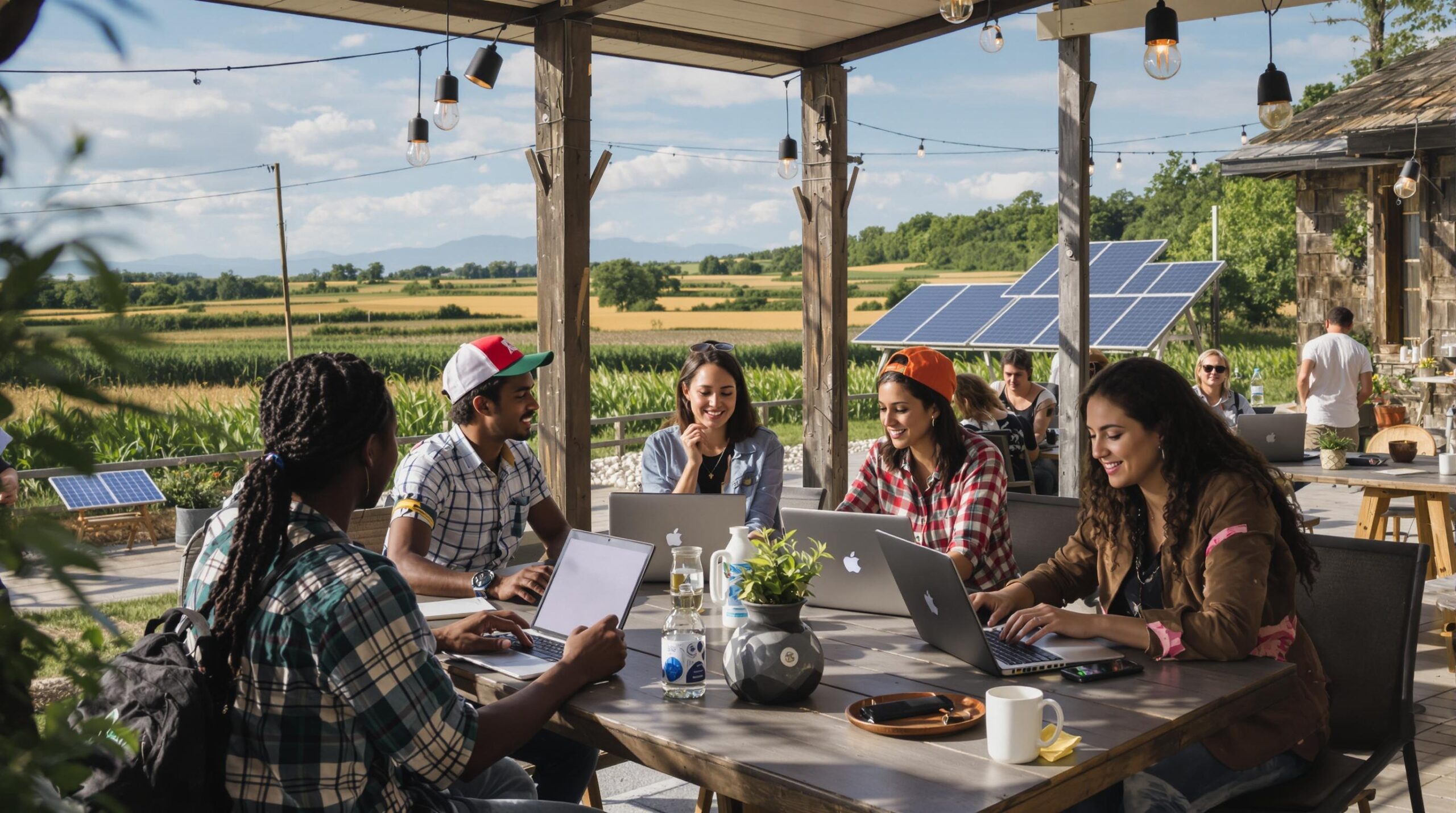Remote work has transformed the global workforce, enabling millions to decouple their careers from specific geographic locations. Where once cities held a monopoly on career advancement and economic growth, rural communities now claim a new stake in the future of work. The widespread adoption of technology continues to blur the traditional boundaries between urban and rural livelihoods. As a result, remote work trends are fostering significant changes in rural areas across the world.
The Migration of Talent to Rural Areas
Before the pandemic, rural-to-urban migration dominated labor patterns. Today, many urban professionals are opting for quieter, rural lifestyles. Advancements in digital infrastructure make it possible for professionals to work from almost anywhere, fueling this reverse migration. Rural communities in countries like the United States, Australia, and the United Kingdom report an influx of skilled workers. These newcomers often bring diverse skills, fresh perspectives, and increased economic activity to their new hometowns. Such population growth stimulates local economies while easing housing shortages and congestion in cities.
Economic Revitalization Through Increased Spending
The influx of remote workers directly impacts the rural economy by increasing demand for housing, goods, and services. Local businesses benefit from this new source of revenue, ranging from restaurants to hardware stores. Many small towns now host coworking spaces, cafes with high-speed internet, and retail stores aimed at new residents. As economic activity increases, municipal tax revenues often rise, creating more funds for public investments. Some rural towns previously on the brink of decline are witnessing a renaissance fueled by remote work dollars.
Changing Real Estate and Housing Markets
Demand for rural housing has spiked as remote workers move to the countryside, seeking affordability and space. Home prices and rents in certain rural areas have increased accordingly. This shift creates opportunities for local property owners and builders. However, it can sometimes push long-term residents out of their communities as affordability declines. Local governments are addressing these challenges by promoting new housing developments and renovation projects. Policies that encourage balanced growth are helping rural communities meet new demands without sacrificing their unique character.
Expanding Digital Infrastructure and Connectivity
Stable internet connections are essential for remote work. The digital divide between urban and rural areas is shrinking as investments in broadband expand. Government initiatives and private sector partnerships help bring high-speed internet to even the most isolated villages. With better connectivity, rural schools, health clinics, and businesses also benefit. Improved infrastructure not only supports remote careers but also enhances the overall quality of life for residents. This connectivity often leads to new opportunities for entrepreneurship and innovation in rural settings.
Environmental and Lifestyle Benefits
Remote work allows employees to leave city congestion and pollution behind. Many discover a higher quality of life in rural locations. Less commuting means fewer emissions and reduced stress levels for many workers. Daily routines often include more time for family, wellness, and outdoor activities. The slower pace of rural living attracts those seeking a healthier, more balanced lifestyle. As new residents settle in, they frequently support local initiatives aimed at environmental preservation and sustainable living.
Societal and Cultural Shifts Within Rural Communities
Newcomers bring diverse backgrounds and skills, enriching the cultural landscape of rural communities. Events, workshops, and social clubs often flourish as remote workers seek to connect locally. Some towns are developing local arts scenes, pop-up markets, and cultural festivals to welcome and integrate new residents. While change can challenge long-standing traditions, many communities are finding ways to blend fresh perspectives with existing values. These cultural exchanges foster stronger community bonds and mutual understanding between established families and new arrivals.
Challenges and Potential Downsides
The remote work renaissance is not without challenges. Rising real estate prices can price out existing residents or create shortages in affordable housing. Some rural communities struggle to expand infrastructure quickly enough to meet new demands on utilities, schools, and health services. In some places, new arrivals may face initial skepticism or cultural barriers from established populations. Local governments and community organizations play critical roles in addressing these concerns through inclusive dialogue and forward-thinking policies. Combining local wisdom with new perspectives will be essential for navigating rapid change.
Global Impact and Regional Variations
Countries around the world are experiencing these trends in unique ways. In Japan, rural towns offer incentives to attract remote workers and revitalize aging communities. Scandinavian countries focus on digital infrastructure to connect their most remote regions. Many African countries see remote work as a way to bridge economic disparities between cities and rural populations. Latin America embraces digital nomadism, with rural resorts and eco-villages catering to remote professionals from across the globe. Learning from global examples can help communities worldwide adapt remote work to local needs and contexts.
The Future of Rural Work and Community Life
As technology continues to advance, rural areas are poised to play larger roles in the world’s economic and cultural life. Future trends will likely include ongoing improvements in connectivity and expanded access to educational opportunities. Regional planning efforts are putting new emphasis on preservation, sustainability, and social inclusion. These efforts seek to balance growth, long-term opportunity, and environmental stewardship. Rural communities that embrace change while respecting their roots are best positioned to thrive in a remote-enabled world.
Conclusion: A New Rural Renaissance
Remote work is forging an unprecedented rural renaissance on a global scale. It opens new possibilities for economic growth, cultural exchange, and environmental sustainability. Challenges remain, but communities willing to adapt are reaping significant rewards. As more workers leave city centers, they carry with them skills, creativity, and a desire for connection. Rural areas everywhere stand ready to welcome the future, leveraging technology to build more vibrant, resilient communities for generations to come.


